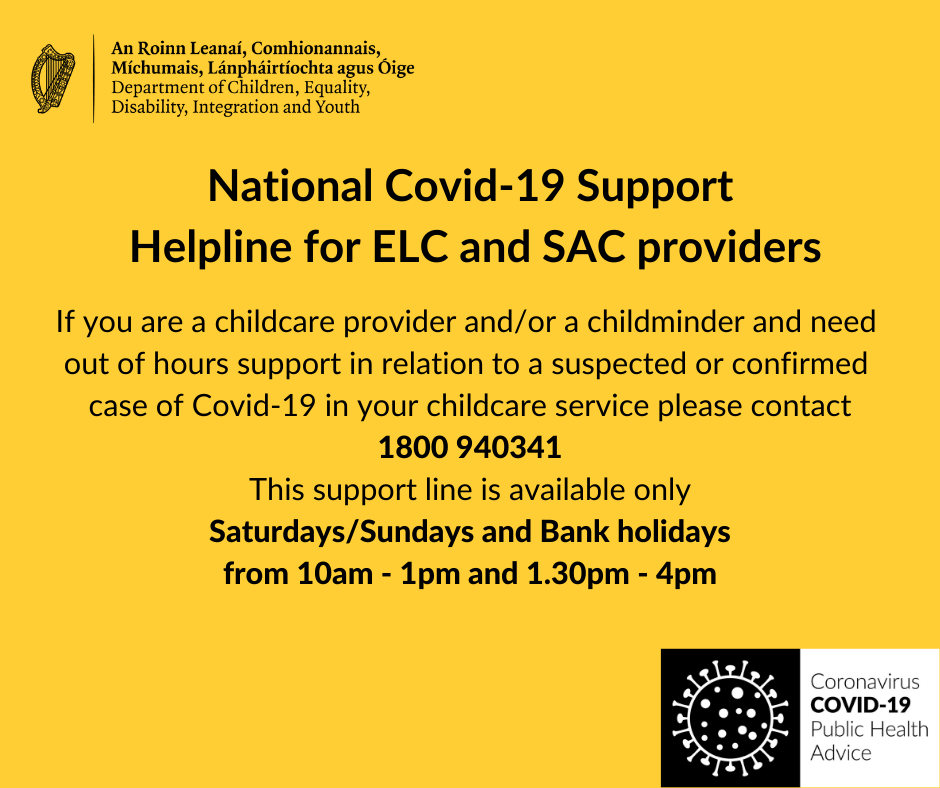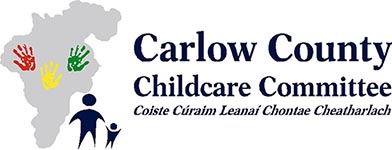Covid-19 Support Helpline for ELC and SAC – 1800 940341
A reminder of the Covid-19 Support Helpline for ELC and SAC – 1800 940341 available from 10am – 1pm & 1.30pm – 4pm at the weekend and Bank Holiday Monday.

A reminder of the Covid-19 Support Helpline for ELC and SAC – 1800 940341 available from 10am – 1pm & 1.30pm – 4pm at the weekend and Bank Holiday Monday.

Let’s Play Ireland, is an annual government-led campaign designed to remind everyone, young and old, of the fundamental importance of play.
Find lots of ideas on how to make this Summer a #SummerOfPlay at : Gov.ie/Summerofplay 21

In support of the Government’s Summer of Play initiative the LINC Team has put together this outdoor experiences poster.
Free to download here: Linc Poster
#outdoorplay #Summer2021 #earlyyears

Minister O’Gorman marks Global Day of Parents with the launch of a new parenting e-learning course and a range of reports on parenting in Ireland
Press Release DCEDIY 01/06/2021


Carlow CCC have organised an online networking session for Childminders or potential Childminders this Thursday 3rd June from 7-7:45pm
Please email siobhan@carlowccc.ie to book a place

Minister O’Gorman announces roll out of Summer of Play initiative with €6m in funding for outdoor play.
The initiative will see grants, supports and information resources rolled out over the summer months, creating opportunities for children and their families to enjoy a summer of play.
#SummerOfPlay #LetsPlayIreland
Press Release DCEDIY 01/06/2021

School Age Childcare sector workshops, commencing next Thursday 3rd June, which Wexford CCC have organised in collaboration with PlayBoard NI and Wexford CYPSC.
The focus of the webinars are aimed specifically at the School Age Childcare Sector, which will complement use of existing SAC outdoor learning environments and play. It will also support and refer to relevant components of DCEDIY SAC Guidelines.
To book a place please email info@wexfordchildcare.ie with your name, the SAC service you work in and the email address you wish the zoom link is sent to.


A reminder of the Covid-19 Support Helpline for ELC and SAC – 1800 940341 available from 10am – 1pm & 1.30pm – 4pm at the weekend.

Publication: Department of Education and Skills Inspections
Published on 26 May 2021
The Department of Education carries out Early Years Education Inspections (EYEIs) in early learning and care (ELC) services participating in the Early Childhood Care and Education (ECCE) Programme. During these inspections, the Department of Education evaluates the quality of the nature, range and appropriateness of the early educational experiences for children participating in the ECCE Programme. Inspection reports are valuable published resources for parents when choosing quality childcare. The inspection reports are published and can be viewed through the Department of Education website.

